In the city of sky scrapers where there is a population density of six thousand per sq km, it’s easy to think it might be hard to find a moment of peace. But pass through Shinjuku station, jump on the Chuo line, and only three stops away you’ll find Koenji; one of the city’s most important creative hubs, and the birthplace of sub culture in Japan’s capital.
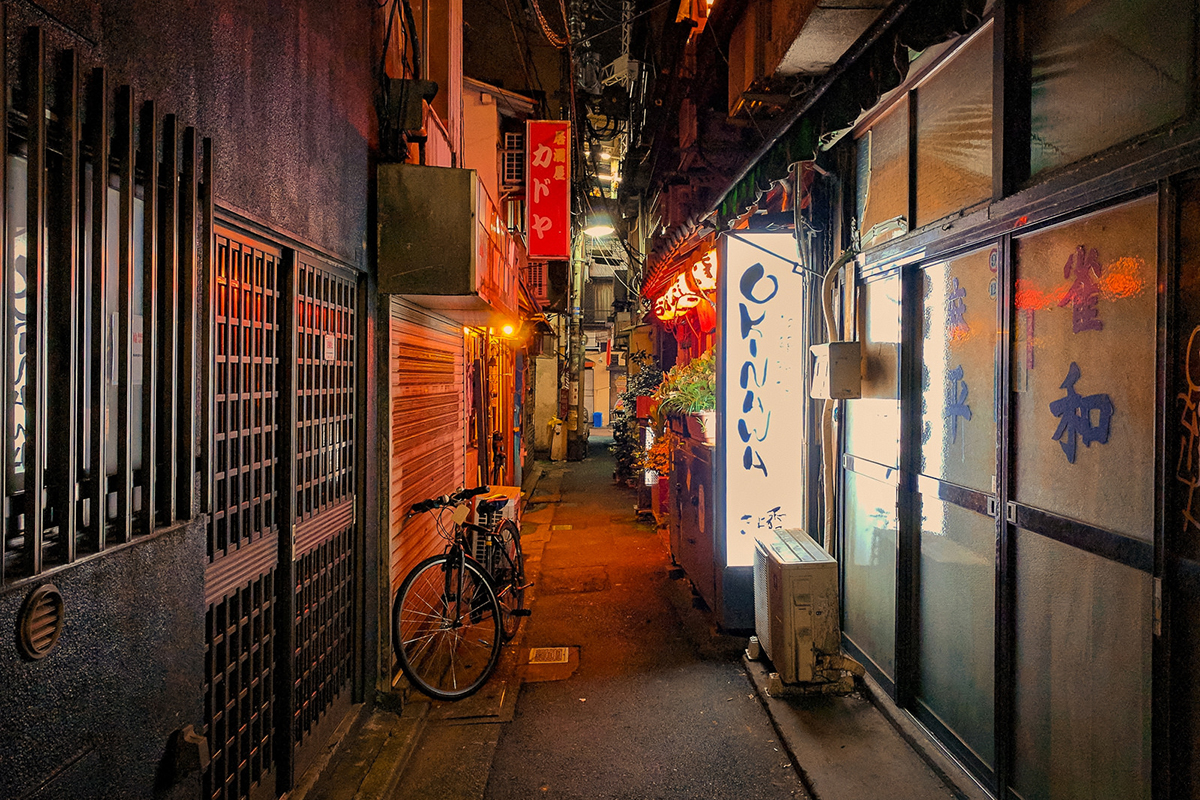
Explore Koenji (Photo: Aleister Kelman via Flickr)
Koenji is an easy-beat part of Tokyo where the buildings only rise three or four storeys, the streets are lined with pink lanterns and tangled cables drape between street lamps. It used to be a farming settlement but was enlivened by an influx of people who’d lost their homes in the Kanto Earthquake of 1923. By the fifties it had grown into an important part of Tokyo and was popular with locals for its kissaten (small cafes serving tea and coffee).
During the last weekend of August, Awa Odori (dance) festival is held in Koenji, which many Tokyo residents will assure you is the best in the city. Every year, around ten thousand performers dance through the streets accompanied by Taiko drums, kane bells and shinobue flutes, watched by hundreds of thousands of spectators who flood the streets for the weekend. Residents of all ages will be out to celebrate and it’s unmissable if you happen to be in town at this time.
It’s not only in the summer months that music and dance is alive and well in Koenji. This place has a strong artistic community. During the sixties and seventies, Koenji made a name for itself by becoming home to the counterculture movement. It was a cosy base for punks and hippies to gather and these roots have nurtured a strong creative and activist culture in this part of town. Most days you will find a local singer-songwriter or band playing to a gathering crowd.

Koenji Awa Odori summer celebration (Photo: Takashi Hososhima via Flickr)
Traditional Koenji
Central to Koenji’s core culture is its numerous Buddhist temples and Shinto shrines. Hikawa Jinja is a Shinto shrine which was allegedly formed in the 12th century. It has a meteorological shrine on its grounds which was prayed to in war time for weather accuracy and is now prayed to by students of meteorology for good luck, or by those hoping for good weather.
Koenji, one of the primary Buddhist temples in the area was built in 1555. The third Tokugawa Shogun was a patron of this temple, giving it prestige and causing it to lend its name to the area. These old establishments remind the wanderer of the antiquity of Tokyo and strengthen its defining characteristic of being a place which has managed to uphold tradition alongside innovation.
As you wander the pedestrian streets here it’s also worth keeping an eye out for traditional architecture. Many of the wooden houses in Tokyo were demolished to be replaced with earth quake proof structures, but in Koenji, houses with sliding doors, paper walls and huge glass windows, that look out onto small, wild gardens, can still be found.
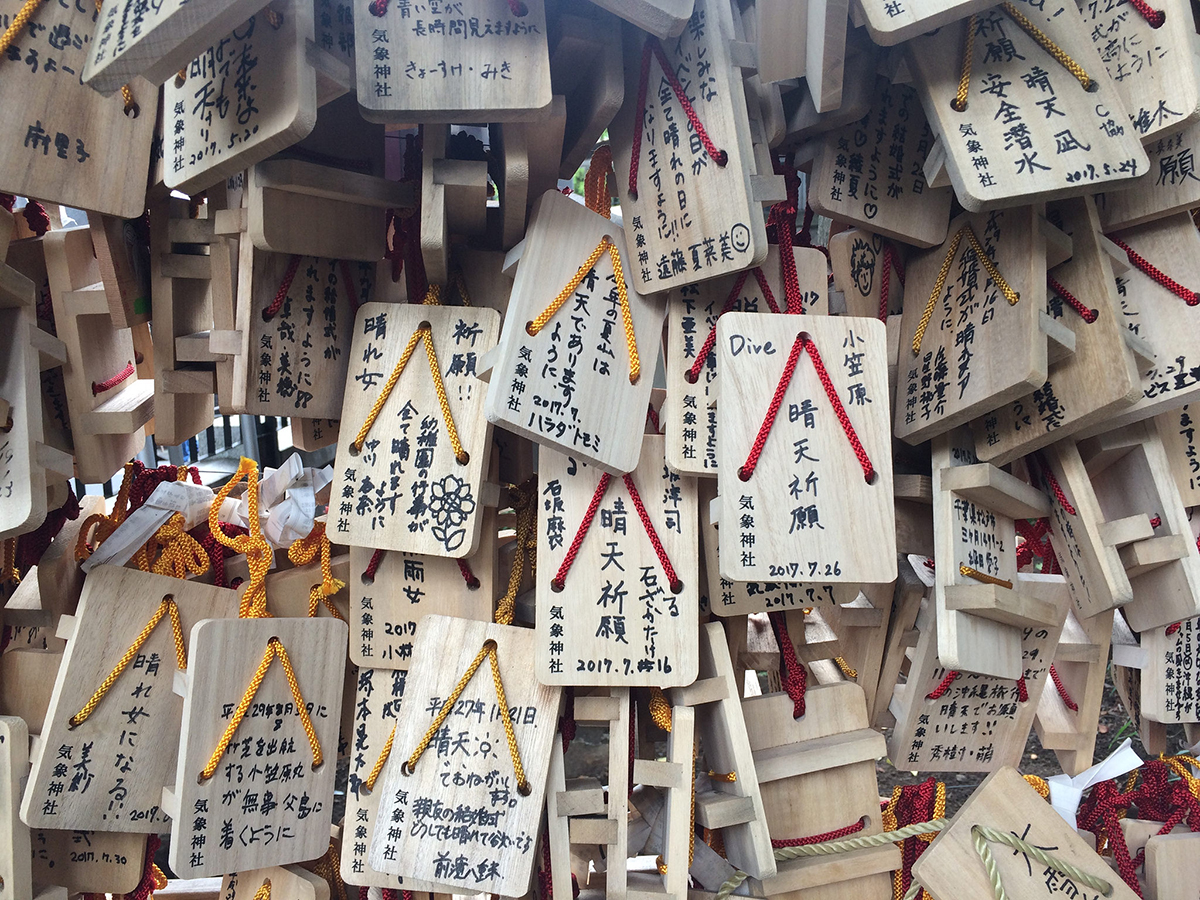
At the Koenji Hikawa Shrine (Photo: C-Monster via Flickr)
Accommodation
Walking into BnA ‘artist’ Hotel (166-0002 Suginami 2-4-7 Koenjikita) is like wandering into an animation. Most walls are painted with scenes from fairy tales or myths and the aesthetic is colourful but still fresh and stylish. The founder explained that he wanted to create a space where locals would also want to hang out, a place that would become a melting pot for internationals and Koenji residents to meet and share artistic ideas and visions. The bar is almost always full of interesting characters and the feel of creative spirit is undoubtedly present.
Junjo Hotel (166-0003 Suginami 4-40-20 Koenjiminami) is built into the first floor of a bigger building and inspired by traditional Japanese housing. Comfortable, clean, and a great insight into traditional architecture, this is a great place to stay. Although it’s located in the heart of a modern neighbourhood, you may feel like you have been transported to another time.
A great option for those on a budget is Grapehouse Hostel Koenji (165-0034 Tokyo Prefecture, Yamato Cho 3-1-5). This is more of a light, airy space than the average hostel and is kept clean. Each bed has an individual light and charging portal. There’s space for travellers to meet in the common room, and it’s possible to explore the surrounding area whilst still living affordably.
Slightly out of the centre of Koenji, Bokuno Café and Hotel Koenji (166-003 Tokyo Prefecture, Koenjiminami 2-48-12) is a simple place to rest a weary explorer’s head in a peaceful part of town. The staff are notoriously absent but if you’re there just to bed down this is an easy and convenient option away from the hustle and bustle, but still within walking distance to the action when it calls you.

Fugu Sashimi (Photo: Raita Futo via Flickr)
Eating
If you’re searching for a famed Japanese dish, then Genpinfugu Koenji – No – Seki (2-3-3 Koenjikita Suginami 03-3330-3129) is a great place to experience eating “fugu” (AKA puffer fish). The poison in one fugu is enough to kill thirty humans. Fear not, the Japanese government has made it law for fugu chefs to study the fish for several years before they can get into the kitchen. This is a great place to try the delicacy in soups, starters or as a main course.
Sushizanmai Koenji is one branch of a chain run by a businessman turned nationally famous sushi chef. The sushi is consistently good but it’s mainly worth coming here to laugh at the animated videos of Zanmai himself wielding a Samurai sword at a fish market whilst buying a giant tuna. It’s a kind of wonderful madness worth immersing in. The live mackerel is not for the faint-hearted.
Towards the northern part of Koenji is Karashitei Higashi Koenji (3-58-8, Wada, Suginami), a steamy Korean BBQ joint. True to Korean BBQ style, a small BBQ is lit in the middle of your table and plates of different ingredients, like cuts of meat, are brought out. You can cook it just how you like it, medium, rare or somewhere in between and keep ordering until you are full. The sauces are second to none.
If it’s hot, Tachigui Kigari Soba Koenji (2-16-2 Koenji Minami, Suginami, 166 – 0003) serves great cold soba noodles which are a staple in the summertime in Japan. They’re brought out in a box on a bed of fine bamboo strips with a separate pot of dipping sauce. They’re equally as good when they’re hot and this place aims to cater to a range of culinary preferences.
Koenji is home to a plethora of different communities, and it shows in the food available. To one side of Takano Seika is an area called Daichi Ichiba, which was previously a market but is now home to several Izakayas and eateries. Chopsticks Koenji Honten, a Vietnamese restaurant in this complex, is a must. The Vietnamese owners have imbued the place with an authentic feel and atmosphere, good prices and, as in most restaurants in this area, there are only a few tables so the food comes quickly. The Pho is top of the list with perfectly cooked noodles and options for starters include rice rolls and deep fried snacks. It’s also a great place for those eating gluten free as most of the menu is rice-based, rather than wheat.
Also on Nakadori Shontegai Street is a small restaurant called Dachibin (3-2-13 Koenji-Kita, Suginami-ku), run by Okinawans who serve up real Goya Champuru (fried bitter melon) and Okinawa Sobu. The Okinawans are renowned worldwide for their long lifespans, so chow down here and you might make it to a hundred and two years old.
If animal products are off your menu then there is a cosy and serene restaurant called Meu Nota (Koenjiminami, 3 Chome−45−11), which serves up classic vegan comfort food like tacos, nachos and curry. Make sure you order a tea to accompany your food as their brewing selection is particularly special and chosen with care to include rosehip, burdock and Yerba Mate blends.
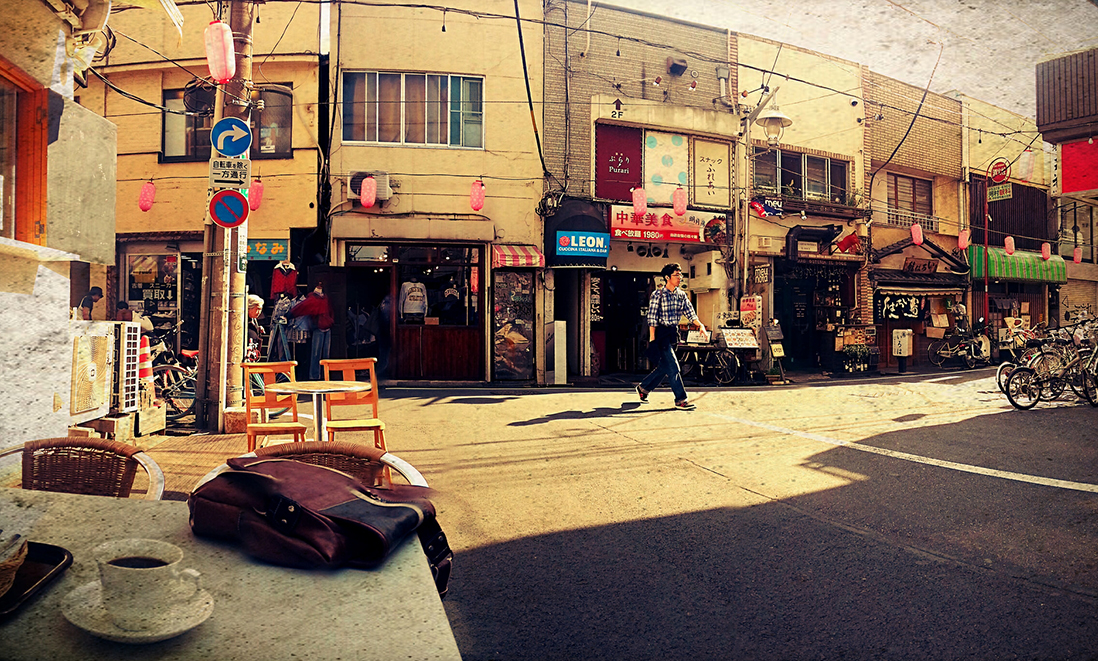
A typical afternoon in Koenji (Photo: lazysupper via Flickr)
Drinking
Nakadori Shontegai Street is a great place to hang out in the evenings. As well as the restaurants we’ve listed, there are more than a handful of tiny bars, Izakayas (traditional Japanese drinking and eating establishments) and yakitori diners. It’s west of the station and is a great place to go before you head out dancing.
Otherwise there is Craft Beer Market Koenji (2-22-6 Koenji-kita, Suginami-ku, Tokyo) where there are about thirty beers on tap. The staff is helpful and will recommend favourites or beers that complement certain dishes. There’s a selection of fusion foods on the menu including seaweed pizza and a variety of other bizarre but delicious combinations.
For a quieter night out, head to Cocktail Shobo (3-8-13 Koenji-Kita, Suginami-ku). This is part library, part coffee shop, part fantasy food stop. Open until 12pm for late night coffee drinkers, here you will find any kind of hot chocolate you can imagine, racks and racks of old books for sale or swap and several dishes inspired by the favourite foods of characters in books on the shelves.
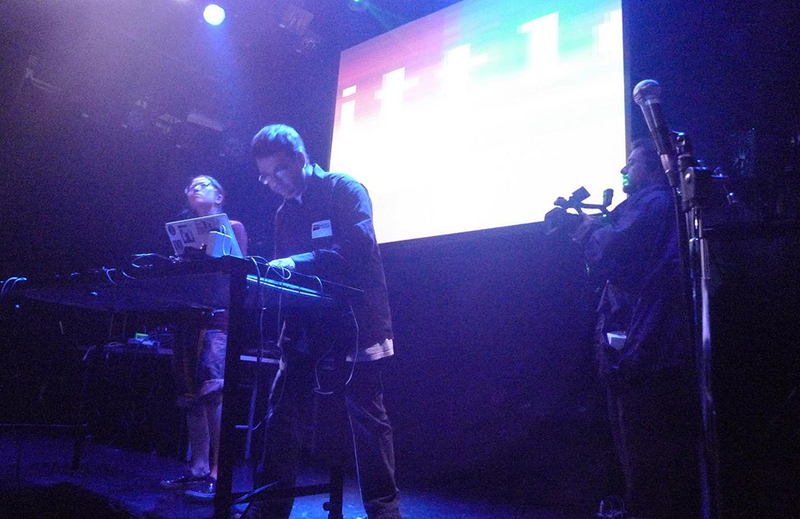
Koenji High (Photo: Lucius Kwok via Flickr)
Music and Theatre
For music, Koenji is hot. Muryoku Muzenji (3-67-1 Koenji-Minami, Suginami-ku), a teeny tiny live house under the train tracks has been rated one of Japan’s weirdest venues. Cats are a big deal in Japan and the owner of this place has collaged the walls with reminders of these tiny lions. There’s a small stage at the front and space for an intimate gig with space for around fifty people sitting on cushions or standing and stomping, depending on the acts; the music ranges from tech-punk to grunge to psychedelia.
Knock Koenji (Koenji Minami 3-48-6 B1F) is an unassuming basement bar in the PAL arcade which hosts Tokyo local artists and DJs playing mainly ambient and experimental sounds. It’s only open at the weekends and there aren’t always online listings so it’s worth just going along to see what’s happening. For those passionate about electronic music it’s also a good place to drink and dance alongside people involved in the local scene.
Koenji High (4-30-1 Koenji-Minami, Suginami-ku) is mainly a hot spot for local indie rock and electronica bands and rarely hosts acts from outside of Japan. It’s the biggest live space in the area with room for up to three hundred people and in 2010 it hosted the Tokyo Blip Festival, an international event which showcased video game-inspired music.
Za Koenji (2-1-2 Koenji-Kita, Suginami-ku) is an independent theatre for contemporary performing arts. The vision of founder, director and playwright Makoto Sato was to create a forum theatre where people from communities of all ages and all nationalities could meet in drama, dance, music and storytelling. It’s open to participation and there are performances which anyone can attend. It’s a beautiful way to get acquainted with the area and the people through play and improvisation.
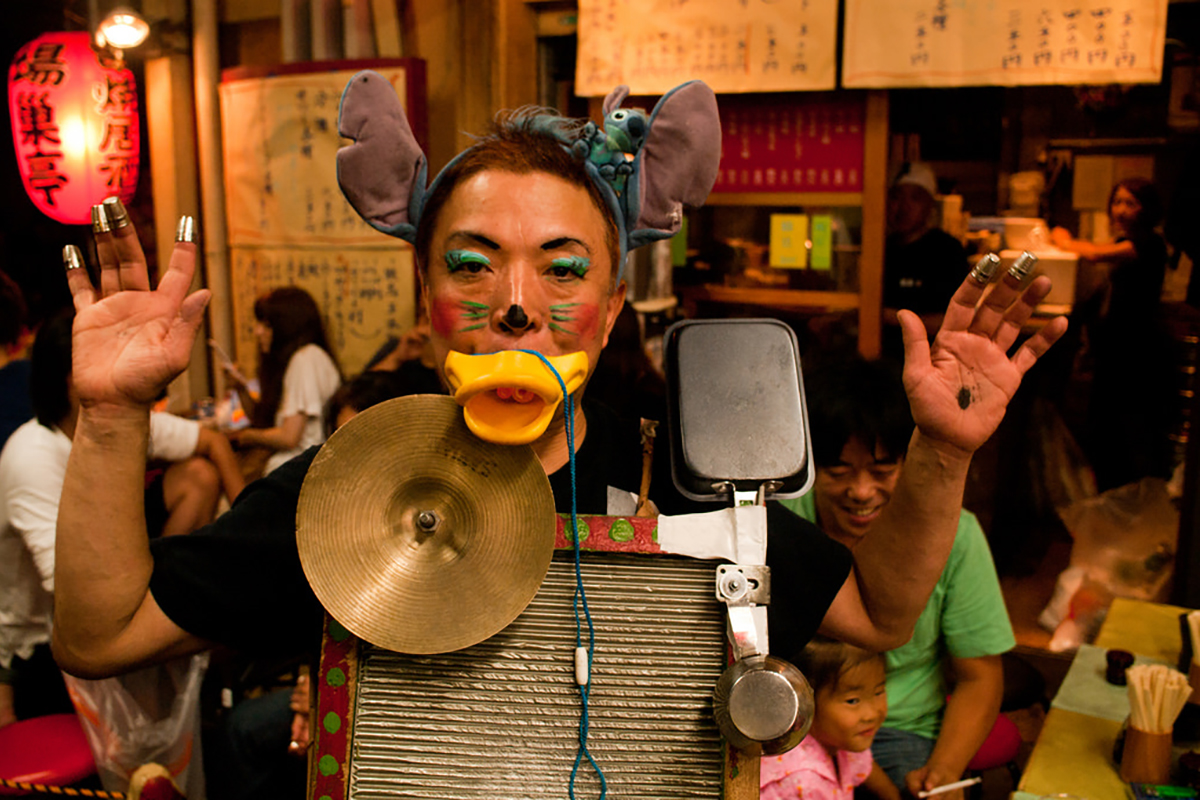
Make friends in Koenji (Photo: Gakuto Ochi via Flickr)
Shopping
Koenji has been on the hit list of shoppers in Tokyo for years now due to the fact that it’s home to more than forty vintage shops. You can find almost anything here; from candy coloured, slightly dusty second-hand gear that makes you sneeze, to a culture of explosive DIY culture as well as a number of shops that host some of the wiliest designers from the land of the rising sun and beyond.
Hayatochiri (3-4-13 Kita Koenji, Suginami ku, Tokyo) is known for selling some of his designs to Lady Gaga. You’ll find him at the back of his store gluing diamonds, studs and mirrors onto leather jackets or around town wearing a pair of jeans made entirely of badges, sifting through trays of trinkets looking for the best thing he can use to pimp his slippers. The shop front looks like a green monster and the door is its mouth. Hot tip: check the sale rail outside for a bargain.
Just next door is Nincompoop Capacity (3-4-13 Kita Koenji, Suginami ku). To enter this wonderland you must climb a paint-splattered fire escape staircase, the walls surrounding which are caked in posters for local events. When you reach the door, pull hard, and don’t be alarmed by the bells that chime as you enter a boudoir of adidas sweatshirts meshed with pink frocks, jumpers with 3m long sleeves, mesh onesies and hoodies that go down to your knees. It’s one of the Tokyo fashionistas’ havens, perfectly sprinkling kawaii (cute) culture on top of a grungy oversized sports style.
Macaronic (2-38-4 Koenji-kita, Suginami-ku, 166-0002) is like a department store for local designers, housing experimental creatives from thrifters to creators from Osaka as well as Tokyo. They’re the kind who shred up old ties to create hats made of plaits and use kitchen cleaning bobble scrubbers to make extravagant padded sleeves. This is not for those who travel to japan to explore the concept of minimalism, but also one not to be missed by those who come to Tokyo for eye busting colour clashes and textures.
If it’s not rags but décor and home aesthetics you’re searching for, Scrap Studio (4-8-7 Suginami ku, 166-0003) is the interior design heaven of this part of town. You can’t miss it for the twinkling lights displayed in the windows, glowing from a distance as you walk down the street. Where there might be rails, there are rows and rows of re-purposed lamps, including a Zildjan cymbal mounted on an engraved wooden stand and hand-made lampshades lining the walls.
Onsen
No guide to a Tokyo district would be complete without a pointer to the best local “onsen” or hot spring bath. Kosugi-yu Onsen (3-32-2 Koenji-Kita, Suginami-ku,Tokyo) is Koenji’s finest and one of the oldest traditional bath houses in the city, with paintings of Mt. Fuji on the walls. There are milk baths and scented baths but sadly no electric baths here (found in other parts of Tokyo – apparently incredibly invigorating!) It’s open until 10pm and about a ten-minute walk from the station. Take an evening out to soak here, chat to locals and let your body rest.